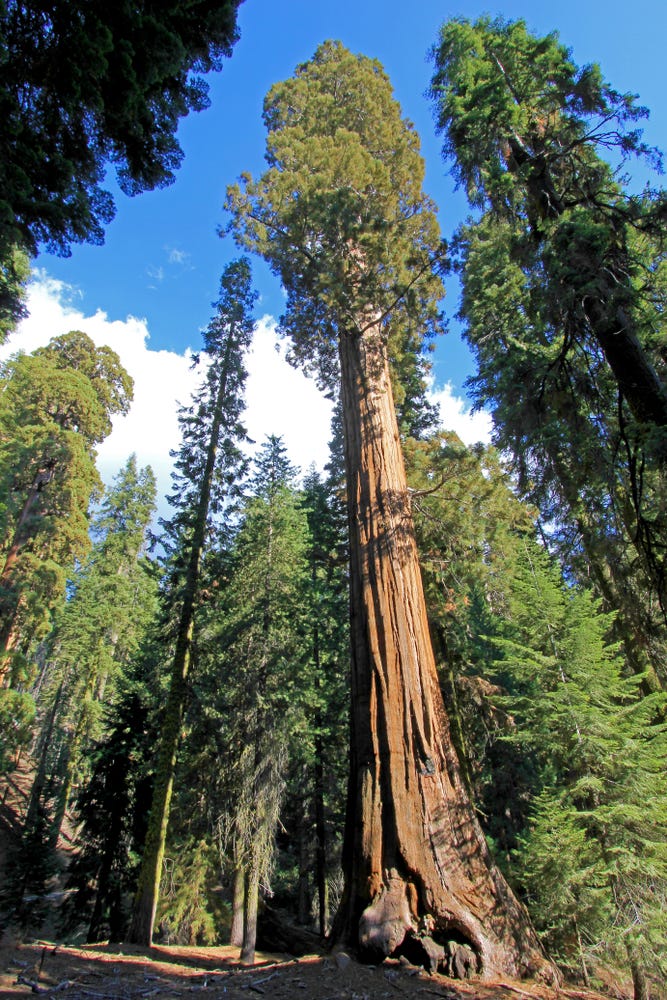“Youth ages, immaturity is outgrown, ignorance can be educated, and drunkenness sobered, but stupid lasts forever.” ― Aristophanes
Image: Shutterstock
While there are many infuriating aspects to what I often refer to as the “Great Green Energy Transition”, the widespread combustion of U.S.-produced wood pellets to generate electricity in Europe may take the (yellow) cake. It’s my belief that most Americans are generally unaware of this situation or, even if they are vaguely cognizant of it, they understandably assume it’s a niche power source. However, as this week’s Haymaker, with backup from a green chicken, will convey, that’s definitely not the case.
For this issue, we are relying heavily on my friend and mentor Doomberg who is also known as the financial world’s most popular Green Chicken. Admittedly, there’s not a lot of competition for that designation. Although I concede it’s more than a little bizarre to have a Verde Pollo as one’s bestie and guiding light, how many chickens do you know who can operate a Bloomberg terminal? In fact, how many human beings do you know who can do so?
Doomberg Chicken
Undoubtedly, some of his mystique and allure stems from his feathered avatar, yet it’s his consistently provocative and well-reasoned insights that set him apart from most of his peers… including the Haymaker, by the way.
Like me, Doomberg is incensed by the environmental hypocrisy inherent in the rationalization of burning wood to create allegedly “green” energy. As he conducted his forensic investigation into this bizarre manifestation of renewable power, it became clear the situation was even worse than he (or I) initially suspected. The facts are, simply, astounding.
Even superficially, the notion of burning wood on a massive scale to provide energy by developed countries in the 21st century is nonsensical. Several previous Haymakers have described the oddity and folly of attempting to transition from greater to lesser energy density. This is daunting enough with solar and wind, but when it comes to wood, it enters the realm of the utterly nonsensical.
As Doomberg notes in a recent missive, titled Back to the Future, Great Britain became truly great only after it had deforested so much of its wooded land that it was facing a severe energy crisis. It was literally running out of trees, meaning energy. This shortage created a serious inflation problem which afflicted all of British society. (Sound familiar?) Fortunately for the emerging naval superpower, just in the nick of time, it serendipitously discovered massive domestic coal reserves.
The switch from wood to coal also played a critical role in the Industrial Revolution that would sweep Great Britain. It was a graphic lesson that higher-density energy sources lead to higher living standards (Europe is experiencing the opposite dynamic presently.)
In Doomberg’s words: “It makes intuitive sense that if we are using carbon-based materials as a source of energy, we’d want to be at the highest (level) possible. This is, in fact, how societies evolve. Wood burning gives way to coal, which eventually gives way to oil and then natural gas as societies can afford cleaner environments. This same reasoning explains the urgency with which the Royal Navy switched from coal to fuel oil at the turn of the 20th century. Had it not, Britain risked losing its dominance at sea.”
(A similar situation happened in the U.S. in the 1950s. In seeking to avoid being out-innovated by the USSR, the U.S. navy rapidly developed and deployed nuclear propulsion. As I’ve discussed in past Haymakers, there is a very real possibility of this same technology helping to solve the world’s current energy crisis.)
Again, the path of human history has consistently been upward to more efficient and, often, cheaper forms of energy. These superior fuel sources have also emitted fewer pollutants, with nuclear energy being the pinnacle of that evolution. These leaps up the efficiency ladder have often been born out of crisis and necessity; fortunately, humanity has been consistently equal to the task - though with extremely disparate rates of progress. But now, we are in a descending pattern with this wood-burning phenomenon being the most inexplicable. Critics of environmental activists have pointed out that a return to energy simplicity ignores the implicit hardship and unscalable nature of earlier energy models.
Showing how pervasive it has become, “Nearly 40% of Europe’s so-called renewable energy is currently obtained by combusting wood”, per Doomberg, with most of it imported from the U.S, significantly from clear-cutting forests in the Southeast U.S.
Image: Shutterstock
(Haymaker: “This, or one ounce of uranium?” - Western Europe: “This.”)
Sadly, it’s a double whammy from a green standpoint: burning wood to produce electricity actually releases more CO2 per unit of heat than does even coal. Further, vast quantities of those carbon vacuums, known as trees, are also destroyed. Of course, they will grow back eventually, but the fact of the matter is that older, larger trees are more effective carbon scrubbers. This is due to their far greater leafage and/or limb structures, even if they are covered with pine needles.
Image: Shutterstock
(A tree that’s done its share of carbon capture)
It doesn’t end there. Once those pellets are (carbon-intensively) produced, they must be shipped overseas. The bunker fuel burnt in this oceangoing exercise also yields one of the dirtiest forms of effluents. But somehow the public is informed that this is an environmentally beneficial endeavor. How is that possible? To quote Doomberg once again, it comes down to the reality-distortion abilities of the European Union (EU) bureaucrats:
“In a farce so perverted and obscene that it can only be the work of bloated and arrogant bureaucracies, a carbon accounting loophole is causing huge amounts of CO2 to be pumped into the atmosphere today that will take decades to abate using natural means.”
This regulatory gaffe gives the lumber industry and European combustors amnesty to essentially use and abuse wood without recourse. It utterly fails to take into full account the contribution of biomass burning to greater carbon emissions. Doomberg goes on to cite a pull-no-punches exposé of this regulatory non sequitur.
“The loophole that enables this orgy of deforestation boils down to how and where emissions are counted. We quote from a scathing report by UK-based Chatham House for the answer:
‘Existing national and intergovernmental policy frameworks treat forest biomass as zero-carbon at the point of combustion and grant it access to financial and regulatory support. Consumption of wood pellets is growing rapidly as a result. Yet these frameworks do not take full account of the contribution of biomass burning to increased carbon emissions.
In 2019, according to our analysis, US-sourced pellets burnt for energy in the UK were responsible for 13 million–16 million tonnes of CO₂ emissions, when taking into account emissions from their combustion and their supply chain, forgone removals of CO₂ from the atmosphere due to the harvest of live trees and emissions from the decay of roots and unused logging residues left in the forest after harvest. Almost none of these emissions are included in the UK’s national greenhouse gas inventory; if they were, this would have added between 22 and 27 per cent to the emissions from total UK electricity generation, or 2.8–3.6 per cent of total UK greenhouse gas emissions in 2019. This volume is equivalent to the annual greenhouse gas emissions from 6 million to 7 million passenger vehicles.’”
Doomberg further observes that the combustion of fully grown U.S. trees dwarfs the CO2 reduction benefits of all the electric vehicles sold in Britain to date. He’s not alone in venting his outrage. Roughly 800 scientists have publicly declared their opposition to this policy, as well as the dissembling that has been put forth by the environmental elites to obscure the dark side of this return to a Dark Ages power source.
Image: Shutterstock
(The future of Haymaker under a “green” economy.)
Unfortunately, this has not turned the tide. Enviva, a leading U.S. producer of wood pellets to Europe, recently announced the signing of contracts to significantly expand exports to fossil fuel-starved Germany. That country has been in the process of eliminating its nuclear generation capabilities, with second thoughts now surfacing in the face of calamity.
Ironically, a single uranium pellet, the size of a human fingertip, contains as much energy as a ton of coal. It would be fascinating to know how many wood pellets it would take to equal one uranium pellet. Unquestionably, from a fuel efficiency standpoint, it is yet another most unappealing tradeoff, one I’ve often addressed.
Without question, the EU will still find creative ways of misallocating and illogically regulating Uranium’s immense power, but at least in adopting it as an energy source, we could spare many of the world’s forests.
As my readers probably know by now, I was early to adopt the portmanteau – a fancy way of saying combined words like smog (smoke and fog) - “greenflation.” This term specifically refers to how the excessive demand for materials needed to create a cleaner economy, especially relative to supply, along with intense pressure not to reinvest in traditional energy, is inherently inflationary. Accordingly, I applaud Doomberg for shining a spotlight on how convoluted and elusive the pursuit of clean, affordable energy can be - not to mention how media coverage and legalese can manipulate regulatory efforts into producing outcomes they were supposed to eliminate.
Clearly, there are no simple answers. And, as this piece points out, in many ways we're now starting to move in the wrong direction, even when it comes to flagrantly harmful behavior. It's my (maybe naïve) hope that both policymakers and the private sector will find solutions that are equal parts pragmatic and innovative so we can work toward a sustainable, realistic approach to future energy production. As many of you know, I believe small modular nuclear reactors offer one of the most promising paths toward this goal.
Source: Trend Radars
For more on the topic of greenflation, we’ll soon be relaying a link to a podcast I did earlier this week with MacroVoices’ Erik Townsend. Erik is one of the most knowledgeable commentators on the oil market in my digital rolodex and we had a lively discussion in that regard. It included a bit of an “opinion exchange” on what I feel is a significantly underestimated supportive factor for oil prices which are, once again, being pummeled on demand-destruction fears. Energy equities have been even weaker, their usual reaction to falling crude prices. The valuations in this sector are irrationally cheap, especially for the producers of such a scarce — and essential — commodity.
As a final nod to my friend Doomberg, for the price of a few lattes (or beers) a month you can access one of the most agile and unique minds in the investment universe. For those interested in learning more about his exceptional work, please follow this link.
Please make certain to “Like” share, and comment. We always appreciate your support and input.










Wow, thank you for this enlightening and infuriating piece... The world needs more nuclear ASAP.
I prefer #GreenIdiocy as a descriptor.
There are situations where burning wood to heat a home makes much sense. The wood needs to be harvested locally, not shipped across the world. When the trees are replanted and grow, they absorb carbon dioxide and release oxygen. This is renewable energy.